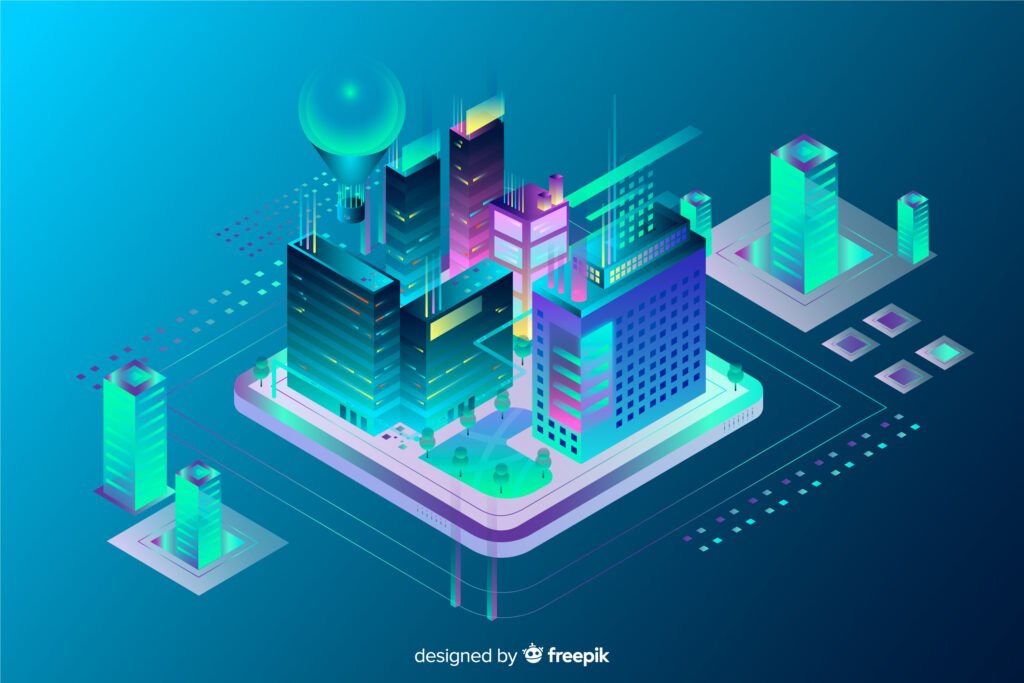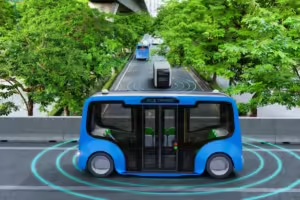Introduction
In recent years, the concept of Smart Cities has emerged as a promising solution to the myriad challenges faced by rapidly growing urban areas.
Characterized by the integration of advanced technologies and data-driven decision-making, Smart Cities aim to enhance the quality of life for residents while promoting sustainability and efficiency in urban infrastructure.
At the heart of this transformation lies Artificial Intelligence (AI), a powerful tool that enables cities to optimize resource utilization, streamline operations, and respond dynamically to changing needs.
A. Definition of Smart Cities
Smart Cities encompass a range of initiatives aimed at leveraging technology to improve various aspects of urban life, including transportation, energy management, public services, and environmental sustainability.
These initiatives are driven by the collection and analysis of vast amounts of data generated by sensors, devices, and systems embedded throughout the urban landscape.
Through AI-driven insights, cities can make data-informed decisions to address challenges and capitalize on opportunities in real time.
B. Importance of AI in Smart Cities
AI plays a pivotal role in the realization of Smart Cities’ objectives by providing the capabilities to analyze complex datasets, automate processes, and optimize infrastructure performance.
By harnessing AI algorithms, cities can unlock new efficiencies, reduce resource consumption, and enhance service delivery across diverse domains.
Moreover, AI enables predictive analytics, allowing cities to anticipate and mitigate potential issues before they escalate, thus fostering resilience and sustainability in urban environments.
C. Purpose of the Content: Building Sustainable and Efficient Urban Infrastructure
This content aims to explore the intersection of AI and Smart Cities with a specific focus on building sustainable and efficient urban infrastructure.
By delving into the applications, benefits, challenges, and future prospects of AI in this context, we seek to provide insights for policymakers, urban planners, technologists, and stakeholders invested in shaping the cities of tomorrow.
Through a comprehensive examination of case studies, best practices, and emerging trends, we endeavor to elucidate the transformative potential of AI in creating resilient, livable, and thriving urban ecosystems.
Understanding Smart Cities
Smart cities represent a paradigm shift in urban development, leveraging advanced technologies to enhance the quality of life for citizens while promoting sustainability and efficiency.
Understanding the underlying principles and components of smart cities is crucial for harnessing the full potential of AI in urban infrastructure.
A. Characteristics of Smart Cities:
- Connectivity: Smart cities are characterized by seamless connectivity among various components of urban infrastructure, facilitated by IoT (Internet of Things) devices, sensors, and networks. This interconnectedness enables real-time data collection and analysis, driving informed decision-making.
- Data-driven decision-making: Smart cities rely on vast amounts of data generated from sensors, devices, and citizens themselves. This data is analyzed using AI algorithms to extract valuable insights and optimize resource allocation, urban planning, and service delivery.
- Sustainability: Sustainability lies at the core of smart city initiatives, aiming to minimize environmental impact and maximize resource efficiency. This includes reducing energy consumption, promoting renewable energy sources, optimizing waste management, and ensuring efficient water usage.
- Citizen-centric Design: Smart cities prioritize citizen engagement and empowerment, fostering participatory decision-making processes and leveraging technology to enhance accessibility to services and information for all residents.
B. Key Components of Smart City Infrastructure:
- IoT Sensors: These sensors are deployed throughout the city to collect data on various parameters such as air quality, traffic flow, energy consumption, and waste levels. They provide real-time insights into urban dynamics, enabling proactive management and optimization.
- Data Analytics: Advanced analytics tools process the vast amounts of data collected from IoT sensors, identifying patterns, trends, and anomalies. Machine learning algorithms play a crucial role in predictive analytics, enabling proactive interventions and optimization strategies.
- AI and Machine Learning: AI algorithms drive many smart city applications, from traffic management and energy optimization to predictive maintenance and urban planning. Machine learning techniques enable the development of intelligent systems capable of adapting and learning from data to improve performance over time.
- Connectivity: Robust communication networks, including wired and wireless infrastructure, facilitate seamless connectivity among IoT devices, sensors, and central control systems. High-speed internet access is essential for ensuring efficient data transmission and real-time monitoring.
Understanding these components provides a foundation for implementing AI-driven solutions in smart cities, fostering sustainability, efficiency, and resilience in urban infrastructure.
As cities continue to evolve and embrace digital transformation, the role of AI in shaping the future of urban living becomes increasingly significant.
Role of AI in Building Sustainable Infrastructure
AI plays a pivotal role in revolutionizing urban infrastructure towards sustainability by offering sophisticated solutions to manage resources effectively and reduce environmental impact.
Here’s how AI contributes to building sustainable infrastructure:
A. Energy Management:
- Smart Grids: AI algorithms analyze real-time data from smart meters and sensors to optimize energy distribution. By predicting demand patterns and adjusting supply accordingly, smart grids minimize energy wastage and enhance efficiency.
- Demand Response Systems: AI-powered demand response systems enable utilities to dynamically adjust energy consumption in response to fluctuating demand and supply conditions. This helps in reducing peak loads, avoiding blackouts, and optimizing energy usage.
B. Waste Management:
- Smart Waste Collection: AI algorithms analyze historical and real-time data to optimize waste collection routes, schedules, and resource allocation. This reduces fuel consumption, minimizes collection costs, and enhances the effectiveness of waste management operations.
- Recycling Optimization: AI-driven sorting systems efficiently identify and segregate recyclable materials from waste streams. By automating the recycling process, AI reduces contamination, improves recycling rates, and promotes circular economy practices.
C. Water Management:
- Leak Detection: AI algorithms analyze data from sensors installed in water distribution networks to detect leaks and anomalies in real time. Early detection helps minimize water losses, conserve resources, and maintain infrastructure integrity.
- Water Quality Monitoring: AI-powered sensors continuously monitor water quality parameters such as pH, turbidity, and contaminants. By detecting potential threats to water quality promptly, AI ensures a safe drinking water supply and supports ecosystem health.
In summary, AI-driven solutions empower cities to optimize energy, waste, and water management practices, thereby promoting sustainability and resilience in urban infrastructure.
By harnessing the power of data analytics and automation, AI contributes to building smarter, greener, and more efficient cities for future generations.
Enhancing Efficiency through AI in Urban Infrastructure
Urban infrastructure plays a pivotal role in ensuring the smooth functioning of cities, ranging from transportation networks to utilities and public services.
The integration of AI technologies within urban infrastructure holds the promise of significantly enhancing efficiency, optimizing resource utilization, and improving the overall quality of life for residents.
Here, we delve into various aspects where AI can be leveraged to transform urban infrastructure:
A. Transportation
- Traffic Management: AI-powered traffic management systems can dynamically adjust traffic signals based on real-time traffic flow data collected from sensors embedded in roads and intersections. These systems can alleviate congestion, reduce travel times, and enhance road safety.
- Public Transportation Optimization: AI algorithms can analyze passenger data, weather conditions, and historical usage patterns to optimize public transportation routes, schedules, and capacity allocation. This ensures that transit services are responsive to the needs of commuters while maximizing operational efficiency.
B. Infrastructure Maintenance
- Predictive Maintenance: By harnessing the power of AI and predictive analytics, cities can anticipate equipment failures and infrastructure deterioration before they occur. Through continuous monitoring of critical assets such as bridges, roads, and water pipelines, maintenance activities can be scheduled proactively, minimizing downtime and reducing maintenance costs.
- Asset Management: AI-driven asset management systems enable cities to maintain comprehensive inventories of infrastructure assets, monitor their condition in real time, and prioritize maintenance and replacement efforts based on asset performance data and lifecycle analysis.
C. Urban Planning
- AI-driven Urban Design: Urban planners can utilize AI algorithms to generate and evaluate design alternatives for urban spaces, taking into account factors such as population density, land use, environmental impact, and transportation connectivity. This facilitates the creation of more livable, sustainable, and resilient cities.
- Land Use Optimization: AI tools can analyze vast amounts of geospatial data to identify underutilized land parcels and optimize their allocation for various purposes, such as residential, commercial, or green spaces. By maximizing land use efficiency, cities can accommodate population growth while preserving natural resources and mitigating urban sprawl.
Incorporating AI into urban infrastructure not only improves operational efficiency but also enhances the overall resilience and sustainability of cities.
However, the successful deployment of AI technologies in urban environments requires careful planning, stakeholder engagement, and consideration of ethical, social, and regulatory implications.
As cities continue to evolve and embrace innovation, AI will undoubtedly play a crucial role in shaping the future of urban infrastructure.
Challenges and Considerations
As cities strive to integrate AI technologies into their infrastructure to become smarter and more efficient, they face several challenges.
They must consider various factors to ensure successful implementation and operation. These challenges and considerations encompass technological, societal, and ethical aspects:
A. Data Privacy and Security:
- Data Governance: Establishing robust data governance frameworks to ensure the responsible collection, storage, and usage of data while safeguarding individuals’ privacy rights.
- Cybersecurity: Protecting smart city systems from cyber threats and ensuring the integrity and confidentiality of sensitive data collected from various sensors and devices.
- Compliance: Adhering to regulatory requirements such as GDPR (General Data Protection Regulation) and other relevant data protection laws to mitigate legal risks and ensure compliance with privacy standards.
B. Equity and Accessibility:
- Digital Divide: Addressing disparities in access to AI-driven services and technologies among different socio-economic groups to prevent exacerbating existing inequalities.
- Inclusive Design: Ensuring that smart city solutions are designed and deployed in a way that considers the needs of diverse populations, including people with disabilities and marginalized communities.
- Community Engagement: Fostering inclusive decision-making processes by involving residents in the design and implementation of smart city projects to promote equity and social cohesion.
C. Integration and Interoperability:
- Fragmentation: Overcoming the challenge of integrating disparate systems and technologies from various vendors to create a cohesive smart city ecosystem that operates seamlessly.
- Standards: Developing and adhering to open standards for data exchange and interoperability to facilitate communication and collaboration among different components of smart city infrastructure.
- Legacy Systems: Upgrading and modernizing existing infrastructure while ensuring compatibility with new AI-enabled technologies to maximize efficiency and minimize disruptions.
D. Ethical AI Use:
- Bias and Fairness: Mitigating algorithmic bias in AI systems to ensure fair and equitable outcomes, particularly in areas such as law enforcement, hiring, and resource allocation.
- Transparency: Enhancing transparency and accountability in AI decision-making processes to build trust among citizens and stakeholders and enable meaningful oversight.
- Ethical Guidelines: Developing and adhering to ethical guidelines and principles for the responsible development and deployment of AI technologies in smart cities, considering potential societal impacts and consequences.
Addressing these challenges and considerations requires collaborative efforts among government agencies, technology providers, civil society organizations, and citizens to build smart cities that are not only technologically advanced but also inclusive, secure, and ethical.
By proactively addressing these challenges, cities can harness the full potential of AI to create sustainable and efficient urban environments that improve the quality of life for all residents.
Conclusion
As cities around the world continue to evolve and embrace the concept of smart urban development, the integration of AI technologies stands as a pivotal enabler of sustainable and efficient infrastructure. However, this journey is not without its challenges and considerations.
From navigating the complexities of data privacy and security to ensuring equitable access and addressing interoperability issues, cities must navigate a multifaceted landscape to realize the full potential of AI in urban development.
Moreover, the ethical use of AI looms large, requiring careful attention to bias mitigation, transparency, and the establishment of ethical guidelines.
Yet, despite these challenges, the promise of AI in smart cities is undeniable. Through energy-efficient systems, optimized transportation networks, and data-driven decision-making, cities can significantly enhance their resilience, livability, and sustainability. Moreover, the democratization of technology and the active engagement of communities can foster inclusive growth and empower citizens to shape the future of their cities.
As we look ahead, the evolution of AI in smart cities holds immense promise. From predictive maintenance to personalized services, the potential applications are vast and transformative. By embracing a collaborative approach and prioritizing the principles of equity, transparency, and accountability, cities can harness the power of AI to build vibrant, resilient, and people-centric urban environments.
In closing, the journey toward sustainable and efficient urban infrastructure powered by AI is one that demands diligence, foresight, and a steadfast commitment to the common good. By rising to meet these challenges with innovation and inclusivity, cities can unlock new possibilities and create a future where technology serves as a catalyst for positive change in the lives of all residents.












